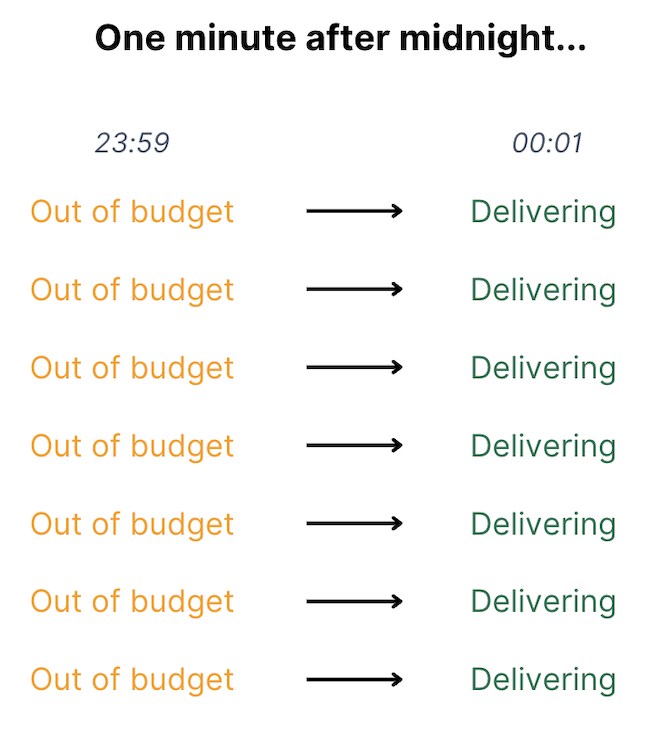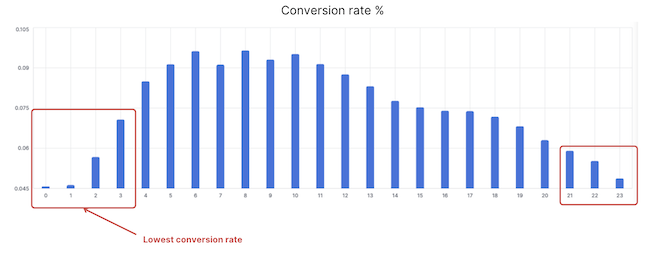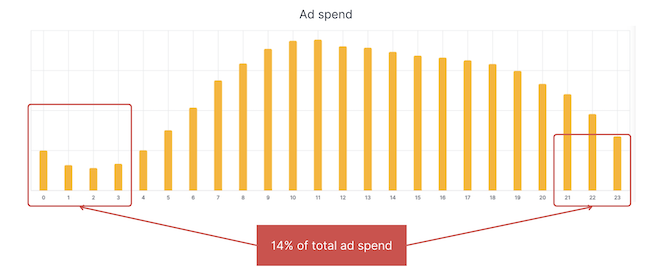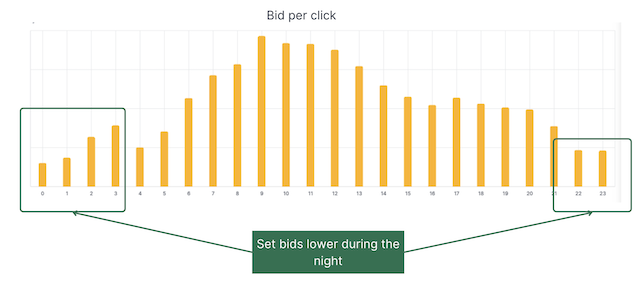Bidding Strategies: Hourly Bidding
Are your Amazon ads draining your budget during the night without delivering results? Hourly bidding is the solution.
With hourly bidding, you can optimize your budget by reducing bids during the most expensive and least effective times. By doing so, you’ll spend less on ads that don’t convert and more on ads that do—improving your campaign’s efficiency. Keep reading to find out how.
Optimizing Amazon Ads with Hourly Bidding
Bids can also be adjusted based on time-of-day performance. With hourly bidding, you can lower your bids during low-conversion times (such as nighttime) to preserve your budget for higher-converting hours.
Why is hourly bidding important for efficiency?
1 . The Budget Reset Effect
- Explanation: Every seller’s daily ad budget resets at midnight, which leads to heightened competition right at the start of the day (after midnight). The sudden rush to secure top positions increases the cost per click (CPC) significantly.
- Key Insight: This is a highly competitive time, meaning bidding aggressively at midnight may lead to higher expenses for fewer results.

2. Top of Search Placement is Expensive During the Night
- Explanation: The cost of securing top-of-search placement skyrockets during the night due to increased competition and lower conversion rates. If sellers use an “up & down” bidding strategy, Amazon will automatically increase bids, which may double the cost.
- Key Insight: While bidding higher might secure top placement, it doesn’t translate into better results overnight because customer activity is usually less active this time.
3. Low Conversion Rates at Night
- Explanation: The provided graph shows that conversion rates (the percentage of users who complete a purchase after clicking) are considerably lower at night. This means fewer sales, even though ad costs are higher.
- Key Insight: Although CPC is high at night, the low conversion rates mean spending at this time is less efficient.

4. Nighttime Spending Still Takes Up 14% of the Daily Budget
- Explanation: Despite low traffic at night, a significant 14% of the total daily budget is consumed during these hours.
- Key Insight: The combination of low traffic and high CPC leads to inefficient budget use—essentially wasting money on clicks that rarely convert into sales.

5. Reducing Bids at Night Improves Efficiency
- Strategy Recommendation: The best approach to reduce inefficiency is to lower bids at night when conversion rates are lower. This adjustment ensures that you’re not overpaying for clicks that don’t result in sales.
- Practical Solution: Tools like Advigator can automatically manage this process by analyzing your products’ hourly conversion rates and adjusting your bids accordingly.

Why This Matters:
- High costs + Low conversion rates = Inefficiency at night By lowering bids during these inefficient hours, you preserve your budget for times when conversion rates are higher, improving overall ad performance.
This analysis emphasizes that understanding when you’re spending your budget is just as important as how much you’re spending to maintain efficiency.
How Often Should You Adjust Bids for Amazon Ad Campaigns?
Bids should be adjusted whenever key metrics like average order value or conversion rate significantly change. Since these shifts happen frequently, using AI-powered automation is crucial to efficiently manage bid adjustments and ensure campaign success without manual effort.
Launch optimized campaigns and leverage automation to keep them optimized over time. Easy to use for any Aamazon seller.
Get started